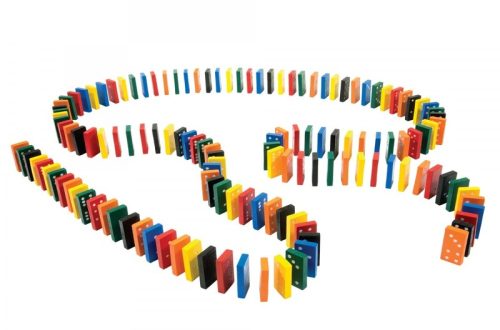Part 1: The History of Transforming Robot Toys
1. The Rise of Transforming Robot Toys:
Transforming robot toys first became popular in the 1980s, with the introduction of the Transformers franchise. The original Transformers were a line of toys created by the Japanese company Takara and brought to the United States by Hasbro. These toys were an instant hit, capturing the imaginations of children and adults alike with their ability to transform from robot to vehicle and back again. The success of the Transformers franchise led to a surge in the popularity of transforming robot toys, inspiring a wide range of imitations and innovations across the toy industry. With their captivating blend of mechanical ingenuity and narrative storytelling, transforming robot toys became a cultural phenomenon, and their impact continues to be felt to this day. The influence of the Transformers franchise has helped to shape the evolution of transforming robot toys and establish them as a timeless and beloved part of toy history.

2. The Evolution of Transforming Robot Toys:
Since the success of the original Transformers, many other companies have created their own lines of transforming robot toys. These toys have evolved over the years, with advancements in design, engineering, and technology leading to more complex and realistic transformations. Today, transforming robot toys come in a wide variety of styles and themes, from classic robots to futuristic mechs and even transforming dinosaurs. The competition in the transforming robot toy market has led to a diverse range of options, catering to different interests and tastes.
Manufacturers are constantly pushing the boundaries of creativity and innovation, incorporating a wide array of features such as intricate detailing, dynamic articulation, and interactive elements. As a result, transforming robot toys have become more than just playthings; they are now works of art that showcase the ingenuity of design and the endless potential of imagination. The expansive range of transforming robot toys available today reflects the enduring appeal of these iconic playthings and their ongoing relevance in the world of toys and collectibles.
Part 2: Collecting Transforming Robot Toys
1. What to Look For:
When building a collection of transforming robot toys, there are several key factors that collectors should carefully consider to ensure they assemble a diverse, high-quality, and valuable assortment. Firstly, it’s crucial to prioritize the acquisition of toys that are in good condition, with minimal wear and tear. Examining the overall integrity of the toys, including joint tightness, paint applications, and the functionality of the transformation mechanisms, are crucial aspects in assessing their condition.
Moreover, collectors may want to focus on specific lines or themes to create a cohesive and curated collection. For example, vintage Transformers from the 1980s, Japanese robot toys from iconic series like Gundam or Mazinger Z, or modern transforming figures inspired by popular media such as movies, television shows, and video games. Focusing on specific lines or themes can add a sense of coherence and narrative to the collection, making it more aesthetically and thematically appealing.
Another crucial consideration is the rarity and value of the toys. Some pieces may be more sought after by collectors due to factors such as limited production runs, exclusive releases, or unique variations and prototypes. Evaluating the rarity and desirability of a particular toy can help collectors make informed decisions about their acquisitions, potentially leading to the addition of highly coveted and valuable pieces to their collection.

2. Where to Find Transforming Robot Toys:
There are several avenues for collectors to find transforming robot toys. One option is to visit toy stores, both brick-and-mortar and online, where collectors can find new releases as well as vintage pieces. Another option is to attend toy conventions and swap meets, where dealers and fellow collectors may have rare and unique items for sale. Additionally, online marketplaces and auction sites can be great resources for finding transforming robot toys, although collectors should be cautious and ensure they are purchasing authentic and high-quality pieces.
Part 3: Caring for Transforming Robot Toys
1. Proper Storage:
When it comes to preserving transforming robot toys, proper storage is essential to maintain their condition and value. Like any collectible, they should be stored in a safe and controlled environment to prevent damage and deterioration. Toys are best kept in a clean, dry, and dust-free area. Exposure to direct sunlight should be avoided as it can cause fading and discoloration of the plastic or paint. Extreme temperatures and humidity can also cause warping, mold, or degradation of materials, so it’s advisable to store them in a climate-controlled space.
To prevent unnecessary wear and damage, it’s important to store toys in a way that prevents them from shifting or rubbing against each other. This can lead to scratches, paint wear, or even structural damage. One way to achieve this is by using individual storage compartments or display cases, ensuring that each toy has its own designated space. When storing multiple toys in the same container, using soft padding or dividers can help keep them separated and protected.
Furthermore, it’s important to handle the toys with care when placing them in storage. Avoid placing heavy objects on top of them or mishandling them, as this can lead to breakage or distortion of delicate parts. For older or more fragile pieces, it may be beneficial to wrap them in acid-free tissue paper or bubble wrap to provide an extra layer of protection.
2. Maintenance and Cleaning:
Regular maintenance and cleaning can help preserve the condition of transforming robot toys. Collectors should periodically inspect their toys for any signs of damage, such as loose joints or broken parts, and address these issues promptly. Toys can be gently cleaned with a soft brush or cloth to remove dust and debris, and any stickers or decals should be kept free of dirt and grime. Additionally, collectors may want to consider using protective cases or display stands to further protect their toys.

Part 4: The Future of Transforming Robot Toys
1. Technological Advancements:
As technology continues to advance, the potential for transforming robot toys is limitless. We’ve already seen toys with intricate transformations and advanced articulation, but the future may bring even more sophisticated designs and features. The ongoing advancements in materials and manufacturing, particularly in the fields of robotics and engineering, open the doors for even more intricate and advanced mechanisms for transforming robot toys.
One exciting possibility is the integration of smart technology, such as remote control capabilities and interactive programming, to further enhance the play experience. This could potentially allow children to not only transform their toys physically but also control them remotely, adding a new dimension of play. Integrated sensors and artificial intelligence could enable these toys to interact with their environment and respond to stimuli, creating a more immersive and dynamic play experience. Additionally, the potential inclusion of augmented reality (AR) and virtual reality (VR) features could bridge the physical and digital worlds, allowing for even more interactive and imaginative play scenarios. As the boundaries between the physical and digital realms continue to blur, transforming robot toys have the potential to become even more dynamic, engaging, and educational playthings for children of all ages.
2. The Impact of Pop Culture:
Transforming robot toys have remained a beloved part of pop culture for decades, and their influence shows no signs of slowing down. With the continued success of movies, TV shows, and video games featuring transforming robots, there’s a strong demand for related merchandise, including toys. As long as transforming robots continue to capture the imagination of fans young and old, these toys will remain a staple of the collectibles market for years to come.




